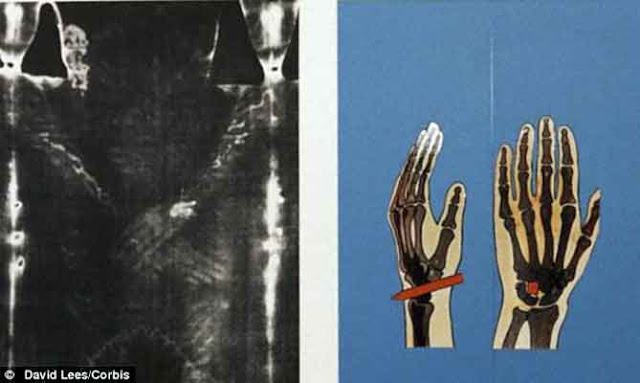The Shroud of Turin is known as the burial shroud of Jesus Christ. It has been a religious relic since the Middle Ages. For believers, it is clear evidence that Christ was resurrected from the tomb, while skeptics consider it proof of human folly and one of the greatest deceptions in the history of art. No one can prove that it is the burial cloth of Jesus of Nazareth, but the bloodstains that make up the body of a wounded man are enough to strengthen the faith of Christians.
The Shroud of Turin forms a negative image of a man with his arms folded. The linen cloth measures 437 cm long and 111 cm wide. The shroud has the image of a man with wounds similar to those suffered by Jesus. The shroud is wrapped in red silk and has been preserved in a silver chest in the Chapel of the Holy Shroud at St. John the Baptist Cathedral in Turin, Italy since 1578.
History
Its first appearance was in 1357, in the hamlet of Lirey in France. It was then taken to Chambéry, in the Savoy region of the country in 1457, and in 1532 the shroud was almost destroyed in a violent fire. This incident left scorch marks on the corners of the folds of the cloth, and in 1578 it was brought to Turin where it has remained ever since. The Catholic Church is convinced that the shroud truly has an amazing physical record of Christ's body, and the cloth is now only shown to the public on rare occasions.
In October 1978, the US scientific group that examined the shroud, reported that the image on the cloth was not the product of a painting. "According to their estimation, the man on the shroud was not painted on the cloth and some oxidation selectively discolored the threads resulting the image of a man in accurate detail when magnified 1,000 times.
The Examination
In 1988, the Holy See authorized the relic for independent radiocarbon dating tests by three separate research institutions, namely Oxford University, the University of Arizona, and the Swiss Federal Institute of Technology. All laboratories used the same sample, a piece of cloth just 1 centimeter by 5.7 centimeters, taken from a corner of the shroud, for testing. The conclusion of the tests stated that the object dated between 1260 and 1390. This proves that the cloth is not the shroud of Christ, but a medieval forgery.
However, recent research has cast much doubt on the validity of the 1988 radiocarbon test. A paper by chemist Raymond N. Rogers published in the January 2005 issue of the scientific journal Thermochimica Acta, suggests that the fabric samples used for radiocarbon dating are invalid.
Chemical testing found that the radiocarbon samples had completely different chemical properties to the shroud. According to Rogers, the sample used for radiocarbon dating must have come from a piece of one of the patches used to repair the cloth after the 1532 fire.
Rogers concluded that, based on the chemical analysis, the cloth was at least 1,300 years old.
During the 2002 restoration, the back of the controversial cloth was photographed and scanned for the first time. In 2004, the Institute of Physics in London published an article in the Journal of Optics A, which revealed the results of analyzing the photographs. Using image processing techniques, Italian scientists Giulio Fanti and Roberto Maggiolio from the University of Padova identified faint and cryptic images on the back of the cloth, particularly in the face and hand areas.
This second image corresponds to the one on the front of the cloth, making it impossible for the paint to have seeped in from the front. This would also refute the theory that the images on the shroud were created using early photographic methods.
 |
| Sumber: dailymail.co.uk |

